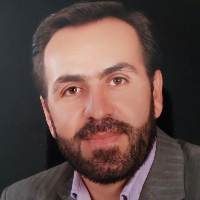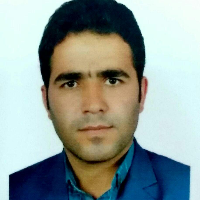The Spatial-Local Effects of Return Migration in Miyandoab County
Author(s):
Abstract:
Introduction
The process of most migrations in underdeveloped countries is from village to city. The reverse of this process, i.e. migration from city to village, is called reverse migration. The reverse migration is an important phenomenon, and in the national scale, the linear motion of migration from urban settlements to rural ones is due to some reasons like the birthplace and initial settlement of immigrants. However, return migration is a process which is related to the birthplace and initial living place of the person, who then immigrated to cities and settled there and after that returned to village. Accordingly, in return migration, the birth place and living place of rural people along with socioeconomic reasons make them migrate to cities and spend a long-life time there, and then, return to their country land. The phenomenon of return migration in Iran is one of the subjects to which little attention has been paid. However, those who have returned to villages can accelerate the development of rural areas with technical skills and financial capitals. This study aims to evaluate the spatiallocal and socioeconomic effects of return migration on rural areas of Miyandoab County.Methodology
The present study is a kind of applied-developmental qualitative research and its method is analytic-descriptive and intensive. Among the different types of qualitative methods, the Grounded theory has been selected. The participants are from Miyandoab county in Southeast of West Azarbaijan. The participants of this study are 126 householders who have come back to their country lands in the past fifteen years. In order to determine the sample size, the researchers made use of purposive sampling using sequential-theoretical method. The field data were obtained through sub-structured interviews with returned immigrants. With 22 interviews reached to theoretical saturation. The data analysis has been done using Strauss Al and Corbin JM methods along with data gathering. In this method, the obtained qualitative data from interviews were analyzed manually in three phases, namely, open coding, axial coding and selective coding.Discussion
At the time of migration, the average age of respondents was 31.4, and at the time of returning, it was 55.2. The returnees had almost higher levels of lands than beneficiaries of the county. The average land of beneficiaries of this county is 4.15 hectares. While, the average land of returned immigrants is 23.7 hectares. Therefore, returned immigrants are those who have significant area of lands (personal or hereditary). The return mechanism followed four indices including economic, social, psychological, and developmental indices. Having evaluated costs and socioeconomic benefits, the immigrants made their decisions to return. Therefore, these two indexes, i.e., cost and benefit outcome, are important return factors. Generally, the economic aspects have more impact on people's motivation in returning to villages while the developmental, psychological and social aspects are in next positions. On the other hand, return migrations (urban- rural) are because of the effects of pull factors in rural areas rather than push factors in urban areas.One of the results of immigrant's returnees is the return of financial and human capitals to villages. The immigrants have brought back their financial capitals or part of them to the villages and invested in different parts of economy. The triggering of industrial livestock and fattening cattle, the development of under pressure irrigation or mechanization of cultivation and harvest stages of grain products are some instances of the returned immigrant's investments in agriculture. The industry sector has also attracted some parts of returnee's capital including workshop industries, building doors, windows and welding, industrial mill, cheese and bakery industry. The establishment of cooperative company of agricultural distribution, and the appliance's repairing centers are also among investment cases of returned immigrants in service sectors of sample villages.
Conclusion
Return migration as a human action in geographical space occurs because of two main types of factors. High costs of living, lack of housing, high rent, unemployment, and cultural problems of destination cities are among a series of factors called Repulsiveness factors. On the other hand, the delivery of infrastructure services, the development of physical layout of village, acquisition and revival of agricultural land are among the other type of factors named the attractions of original place. However, the effect of economic factors in making people return to village was much more. Therefore, the findings of this study are in harmony with push-pull theory of Everett S. Lee and Lary Shastad's theory. The fact that returnees did not disconnect themselves to village people and have had significant land areas acted as a system of desired data in Mabogunje theory in immigration returning phenomenon. Return migration shows the capital trend from city to village. The trend of human and financial capitals in rural areas indicates the geographical reforming in the studied area. The return of human capitals, skills, experiences, and economic capitals in the form of return migration has a kind of cyclone flow of capital in space area having a flow from village to city and then to village.Keywords:
Language:
Persian
Published:
Journal of Research and Rural Planning, Volume:5 Issue: 1, 2016
Pages:
83 to 98
magiran.com/p1544616
دانلود و مطالعه متن این مقاله با یکی از روشهای زیر امکان پذیر است:
اشتراک شخصی
با عضویت و پرداخت آنلاین حق اشتراک یکساله به مبلغ 1,390,000ريال میتوانید 70 عنوان مطلب دانلود کنید!
اشتراک سازمانی
به کتابخانه دانشگاه یا محل کار خود پیشنهاد کنید تا اشتراک سازمانی این پایگاه را برای دسترسی نامحدود همه کاربران به متن مطالب تهیه نمایند!
توجه!
- حق عضویت دریافتی صرف حمایت از نشریات عضو و نگهداری، تکمیل و توسعه مگیران میشود.
- پرداخت حق اشتراک و دانلود مقالات اجازه بازنشر آن در سایر رسانههای چاپی و دیجیتال را به کاربر نمیدهد.
In order to view content subscription is required
Personal subscription
Subscribe magiran.com for 70 € euros via PayPal and download 70 articles during a year.
Organization subscription
Please contact us to subscribe your university or library for unlimited access!




